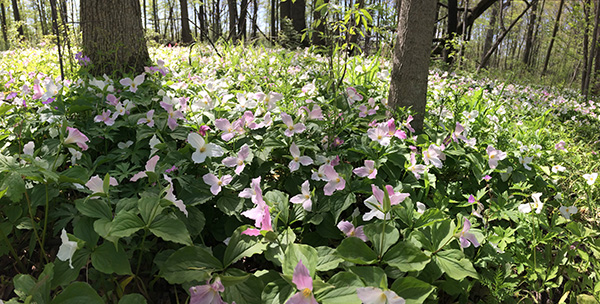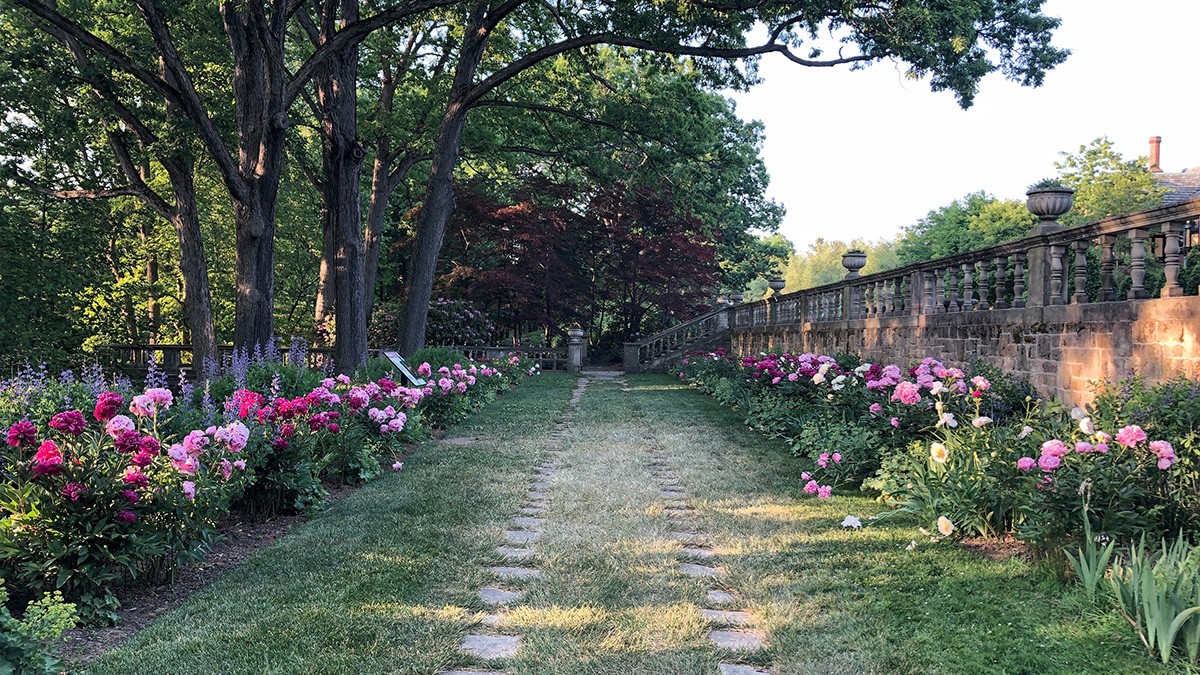|
“The garden reconciles human art and wild nature, hard work and deep pleasure, spiritual practice and the material world. It is a magical place because it is not divided.”–Thomas Moore, born 1940, American author, The Re-Enchantment of Everyday Life (1997)
|
Last Call to Order Iris and Daylilies for Delivery this Summer!
|
|
|
|
How can it be mid-July already? That means we are shipping iris and daylilies, and we’ll only be accepting orders through noon (Eastern Time) on Tuesday, July 30.
Though 5 iris varieties are already sold out (sorry!), you can still get your hands on many others including 16th-century iris pallida Dalmatica and 'Swerti', smoke-and-lavender ‘Quaker Lady’, perfectly imperfect ‘Loreley’, and sturdy charmers ‘Honorabile’ and ‘Coronation’. Daylilies remaining include everything from 5-7’ tall ‘Autumn Minaret’, long-blooming ‘August Pioneer’, rare and lustrous ‘Libby Finch’, to richly-colored ‘Theron’ and ‘Royal Beauty’. And if you just can’t decide, our ever-popular samplers will be sure to please – find them listed at the beginning of the iris and daylily sections respectively!
|
It’s Lily Season!
|
|
|
|
We love the way lilies carry our garden between the time our iris and peonies have faded and before the dahlias come into their own. Dramatic and long-lived where happy, lilies are a garden staple for summer blooms. To help you decide which you might like to add this fall, we’ve arranged them here by bloom time, so you can select varieties which will provide a beautiful succession of color next summer. (Quotations are from Swiss lily expert and nurseryman Pontus Wallsten, writing in Gardens Illustrated.)
Early summer:
Madonna lilies are ancient, going back at least to 1600 BC, and are ravishingly fragrant. While we recommend them just for zones 6a-7b(9bWC), so if you’re lucky enough to have suitable conditions, give them a try.
‘Corsage’ was recommended to us by a customer years ago and we’ve carried it ever since, enchanted by its dependable beautiful blend of pastel lemon, pink and ivory.
Regal lily – “By the wall of my house is a small clump of bulbs that have flowered faithfully for the past nine years, filling the summer air with the sweet scent of jasmine, and requiring no particular effort on my part. ”
Early-midsummer:
Staff-favorite ‘Red Velvet’ has dark, luscious red blossoms that attract hummingbirds along with most human garden visitors. It's a color that’s hard to find amongst lilies, and it wouldn’t be summer without it here at OHG…and since it was bred in New England you know it has to be tough!
Midsummer:
‘Golden Splendor’ – “A vigorous, fragrant trumpet hybrid. The yellow flowers have a darker, purple reverse, and are held on strong stems. Bulbs will eventually reach the size of a small melon.”
‘African Queen’ – “Fragrant, vivid-orange flowers. Very vigorous and long-lived, it is happy in any well-drained, humus-rich spot in full sun or afternoon shade. ”
‘Black Beauty’ – “An almost indestructible hybrid with sturdy, bamboo-like stems that can hold more than 50 dark-purple flowers with a green-and-black center. Each peduncle usually produces a secondary bud that opens once the first has finished so flowering lasts for almost two months.”
Lilium superbum is an impressive native turks-cap that does best in moist meadows, where it is glorious, growing 5-8’ tall!
L. lancifolium ‘Flore-pleno’ (double tiger lily) was admired by Felder Rushing (author of Passalong Plants) who told us it was a magnet for tiger swallowtail butterflies in his Mississippi garden.
We hope that helps! You’ll find other possibilities in our spring-planted diverse listings, should you want to explore further.
|
Perennializing vs. Naturalizing: What’s the Difference?
|

|
|
Although the words “naturalize” and “perennialize” are often used interchangeably, their meanings aren’t exactly the same – and it can make a big difference in the garden.
“Perennialize” means the bulbs will behave like perennials, coming back year after year and multiplying underground. “Naturalize,” on the other hand, means the bulbs will also multiply by seed, with little or no care, and as a result they usually spread further and faster. It’s always fun to walk through older neighborhoods in the spring and see swaths of color appearing, the legacy of some past homeowner and gardener.
Almost any bulb can set seed, but it takes time for the seeds to mature, so deadheading or mowing an area early will reduce the likelihood of seedlings. If you’re interested in experimenting, we recommend starting out with many of our fall-planted diverse bulbs, particularly winter aconite, purple-headed garlick, Grecian windflower, Turkish glory-of-the-snow, Dutchman’s breeches, snake’s-head fritillary, snowdrops, Spanish bluebell, Southern grape hyacinth, silver bells, and Siberian squill.
Other fall-planted varieties we offer that will naturalize given time, the right spot and the right conditions include tommies (Crocus tommasiniaus), ‘Roseus’ crocus, and Roman hyacinths.
If you’ve had success with other heirloom bulbs naturalizing happily by seed in your garden, please let us know and we’ll share the good news here with our readers.
|
Summer Fun: An Online Guide to Historic Landscapes Near You
|

|
|
Summer is a great time for visiting other people’s gardens, and if you like historic gardens – or historic parks or maybe even historic cemeteries – there’s a wonderful online guide that will help you find ones close to where you live or travel, including some you probably never even knew existed.
It’s called “What’s Out There” and it’s an ongoing project by The Cultural Landscape Foundation, the country’s leading non-profit devoted to historic landscapes. To find out what’s near you, go to https://www.tclf.org/landscapes-near-you and enter your location and distance you’d like included. Or use their advanced search to search by landscape type – including garden/estate, botanical garden, public park, and many more (even roof garden!) – or by designer, style, or the individual site’s name. Have a great time exploring virtually or in person!
|
To Make Sure Our Newsletter Reaches You Safely . . .
|
|
|
Please add newsletter@oldhousegardens.com to your email address book or safe/approved list today.
|
To Unsubscribe
|
|
|
We hope you enjoy our monthly Gazette, but if not UNSUBSCRIBE here and we’ll drop you from our list immediately.
|
|

























